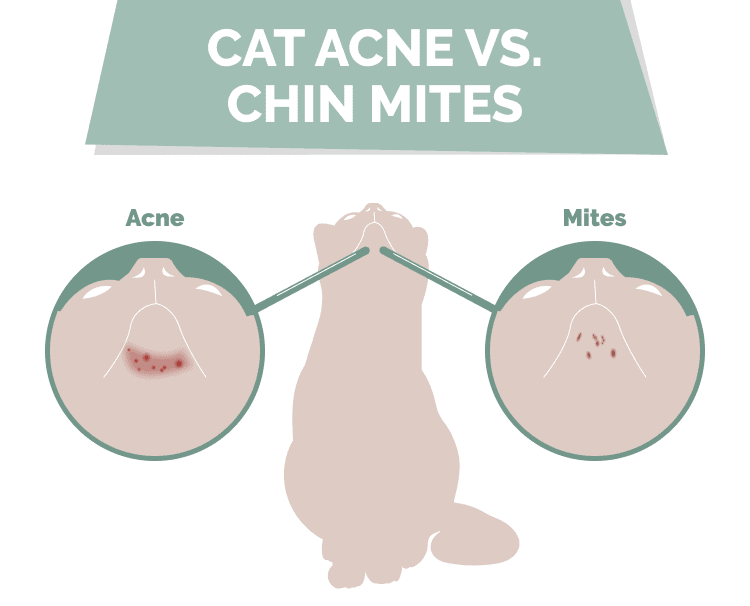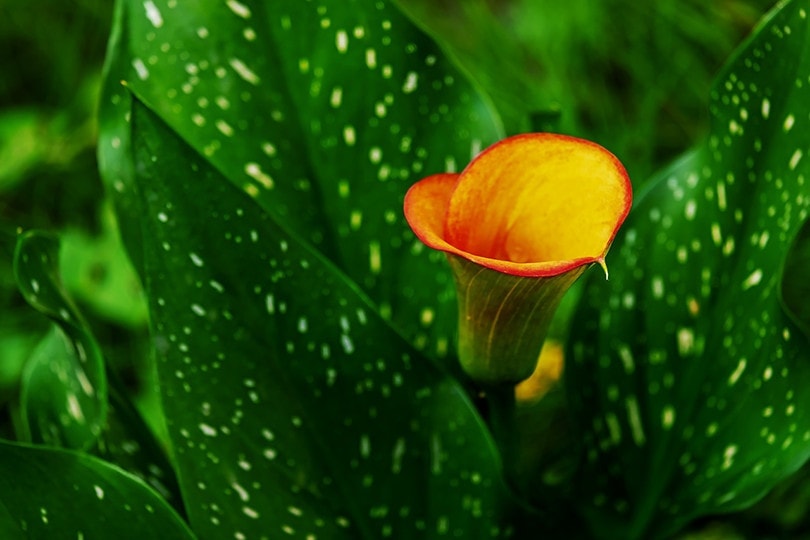Feline Lower Urinary Tract Disease (FLUTD): Our Vet Explains the Signs, Causes & Care

Updated on
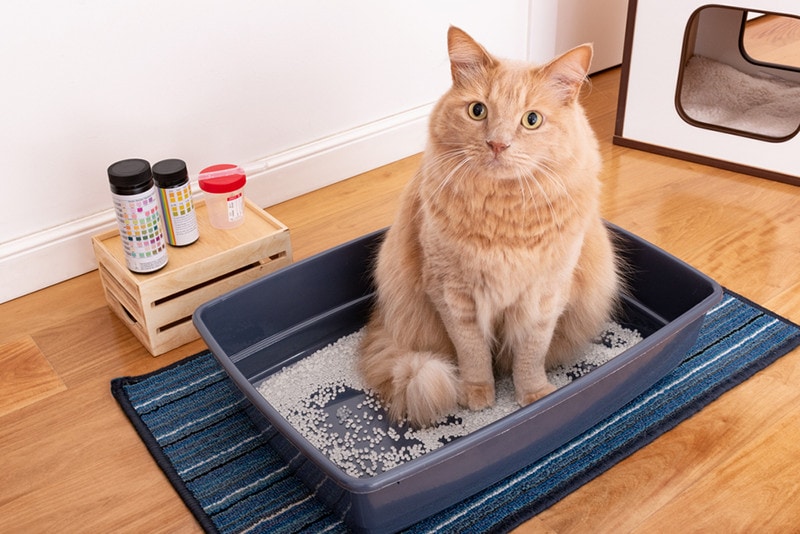
Click to Skip Ahead
Cats are creatures of contradiction, capable of being aloof and affectionate, independent and needy, and robust and sensitive. Cats have been known to soldier on with broken limbs or power through a case of severe pneumonia, but when something is amiss with the urinary tract, you better believe you’re going to know about it.
Even if your cat normally toilets outside, they will go out of their way to let you know there’s a problem by piddling on your shoes, peeing in the kitchen sink, or squatting in every corner of the house. This is a good thing because we don’t want to think about them suffering in silence! But if you have a cat that seems to often suffer from urinary issues, you might be starting to feel frustrated—why does it keep coming back?
The most likely answer is that your cat is experiencing a common disorder of cats: feline lower urinary tract disease (FLUTD), previously known as feline urological syndrome (FUS). The good news is that we know a lot more about this condition than even 5 years ago, including the best ways to get the diagnosis and treatment right and keep your cat’s urinary issues under control.
What Is FLUTD?
Feline lower urinary tract disease (FLUTD) describes several conditions or clinical signs that affect the bladder and urethra of cats. In the past, cats showing signs of urinary problems were assumed to be suffering from a bacterial infection, given antibiotics, and sent on their way. Although infection can contribute to FLUTD, it is actually one of the least common causes.
- Feline idiopathic cystitis (FIC), also known as sterile cystitis or “pandora syndrome”
- Urolithiasis and crystalluria
- Urethral obstruction
- Anatomical defects
- Neoplasia (cancer)
- Infection (bacterial cystitis)
Most of these will present with similar clinical signs, so a thorough clinical examination and urinalysis are needed in order to get to the bottom of the problem and get your kitty onto the right sort of treatment.
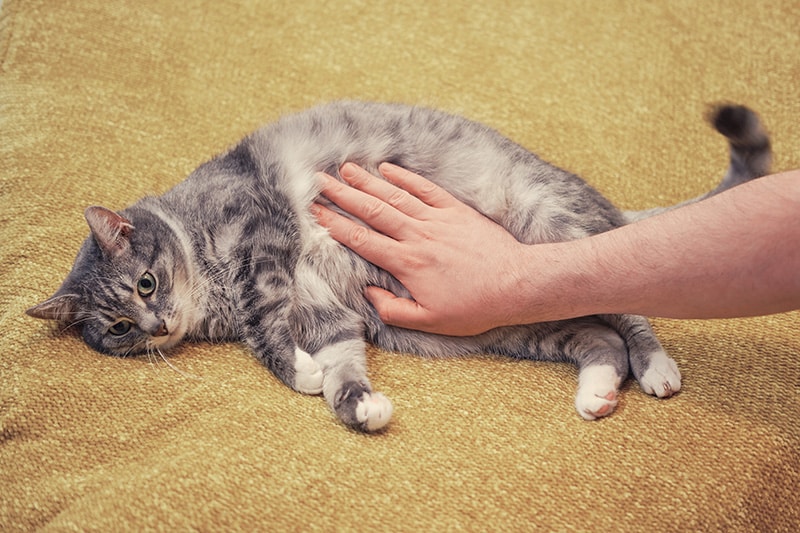
What Are the Signs of FLUTD?
Although individual cats and each condition will have some differences, most cats with FLUTD will exhibit some or all of the following signs:
- Hematuria (blood in the urine, which may be clots or pink or red urine)
- Dysuria (painful urination with signs of crying out when urinating and licking the genitals)
- Stranguria (difficulty passing urine with a slow, weak, or intermittent stream)
- Pollakiuria (passing small amounts of urine frequently)
- Periuria (inappropriate urination, like urinating outside the litter box)
Cats with FLUTD may appear otherwise normal, may drink more than usual, or become quiet and withdrawn, depending on the nature of the problem.
How Is FLUTD Diagnosed?
Your vet will use a combination of the history you provide, a clinical examination, urinalysis, and possibly blood tests to reach a diagnosis. The components they will be most interested in are:
- The size, shape, and feel of the bladder
- The hydration status of your cat
- The color and appearance of your cat’s urine
-
Urinalysis results:
- pH: cat urine should be slightly acidic, with a pH of 6.0–6.5
- presence of blood (not always visible to the naked eye)
- presence of protein (an indicator of kidney damage)
- presence of glucose or ketones (an indicator of diabetes)
- urine concentration (an indicator of kidney function)
-
Urine microscopy that looks for:
- red or white blood cells
- crystals
- bacteria
- Bacterial culture and sensitivity (if indicated)
- Bladder imaging (X-ray or ultrasound)
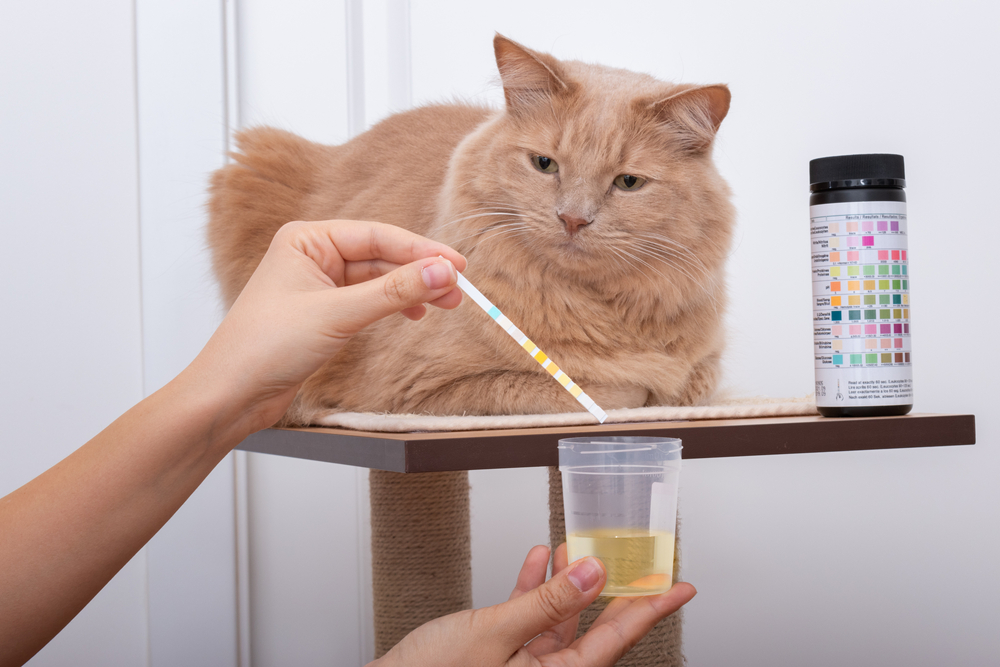
What Are the Causes of FLUTD?
As we touched on earlier, there are a number of different conditions and diseases that contribute to FLUTD.
Feline Idiopathic Cystitis (FIC)
This is probably the most underdiagnosed contributor to FLUTD, as well as the most significant. The “idiopathic” component tells us that this is a diagnosis of exclusion, when everything else has been ruled out. It can be a frustrating diagnosis to reach and an expensive one because many, if not all, of the above tests need to come back negative before we know what we are, and aren’t, dealing with. Although it is widely understood that stress (both short and long term) is likely the most significant factor in cats with FIC, the actual mechanism is not fully understood.
Cats that experience FIC do not necessarily display overt signs of stress, but they may be affected by changes in their environment, such as new people or pets, animals outside the home, moving house, renovations—anything that disrupts the status quo. It is possible that the production of the stress hormone, cortisol, may have a destabilizing effect on urine production or on the bladder, resulting in intermittent inflammation and discomfort.
Treatment
This is where an inaccurate diagnosis or treatment plan can really let our cats down. Because the signs of FIC come and go, when cats are sent home with a course of antibiotics, it can appear that they have done the job, only for the signs to return some days, weeks, or months later.
Once we have ruled out infection and other causes of your cat’s clinical signs, we can start to manage the actual problem. This may involve a combination of environmental adjustments, pheromone/calming sprays or diffusers, supplements to optimize bladder and urine health, and sometimes medications to treat anxiety or break the habit of inappropriate toileting. Anti-inflammatories are often used to reduce any inflammation of the bladder and urethra and make your cat more comfortable.
Sadly, many cat owners become quite disillusioned when their cat’s urine issues are not resolved right away, and FIC is a common reason for cats to be rehomed or even euthanized, which may be avoided by doing a complete work-up at the start.
Urolithiasis and Crystalluria
Healthy urine should contain the right combination of chemicals and stay at the right pH. This is largely controlled by the filtration system of the kidneys, but it also depends on how food is metabolized, the type of food eaten, and having the right amount of moisture in the system.
When the equilibrium is out, chemical by-products start to crystallize in the urine. These crystals can irritate the walls of the bladder and urethra, create “sludgy” urine, and accumulate into larger crystals or stones (uroliths) that can block the urethra.
Treatment
Complete urinalysis and identification of the type of crystals/stones are needed to treat this problem. The most common type of crystal in cats is struvite, which forms when the pH of the urine is too high. Increasing hydration (encouraging drinking, feeding more wet food, adding water to food) plus feeding a diet formulated to dissolve and prevent struvite formation is generally successful.
If there are larger stones present, surgery will be needed to remove them from the bladder (cystotomy).
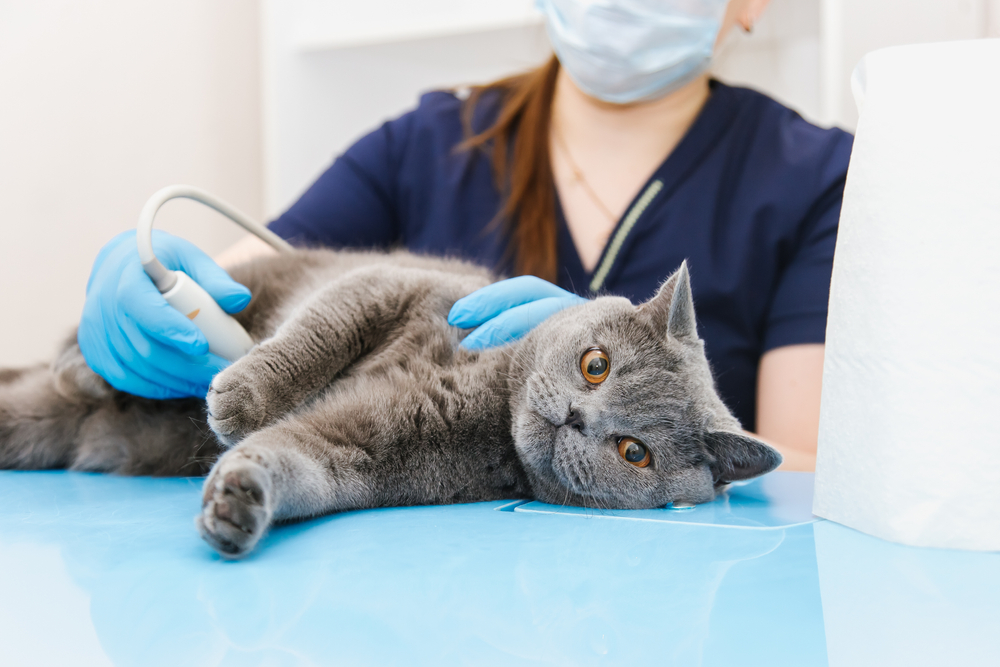
Urethral Obstruction
Crystals, stones, and mucus plugs can become lodged in the urethra, causing a life-threatening obstruction. This condition occurs most commonly in younger, overweight, neutered male cats. Female cats are rarely affected because their urethra is short and straight, whereas the male urethra is longer and has a slight S-bend where blockages may form.
When a cat has a urethral obstruction, often referred to as a “blocked cat,” urine accumulates in the bladder and starts to back up towards the kidneys, and toxins build up in the bloodstream. Not only is there a risk of bladder rupture, but high levels of potassium (hyperkalemia) can lead to cardiac arrest.
Treatment
A blocked cat is an emergency, and treatment involves decompressing the bladder by introducing a urinary catheter into the urethra and flushing the obstruction back towards the bladder. Intravenous fluids help remove the toxins from the bloodstream, and other medications may be needed to counter the effects of hyperkalemia.
In some cases, surgery is required to remove any stones or plugs from the bladder, and in more severe cases, where blockages keep occurring, a procedure called a perineal urethrostomy may be performed. This involves amputating the penis and creating a new urethral opening just below the anus.
Neoplasia (Cancer)
Fortunately, neoplasia of the lower urinary tract is quite rare in cats. Diagnosis is made using a combination of urine cytology and imaging. The most common type of cancer affecting the urinary tract is called transitional cell carcinoma. Surgical removal is possible, but it has a high rate of recurrence and metastasis (spread to other parts of the body).
Infection (Bacterial Cystitis)
As we mentioned earlier, it was common in the past for cats with signs of FLUTD to be given a course of antibiotics without any evidence of bacteria. Bacterial cystitis is often caused by fecal contamination and is more commonly seen in female cats due to their short urethra.
Bacterial infections can accompany any of the other forms of FLUTD, most likely due to the combination of inflammation and licking.
Treatment
If bacteria are found on urine microscopy, this does not eliminate the presence of other causes of FLUTD, but the infection needs to be treated first. A bacterial culture and sensitivity may be performed on a sterile urine sample, obtained via a needle into the bladder (cystocentesis), to ensure that the appropriate antibiotic is selected.
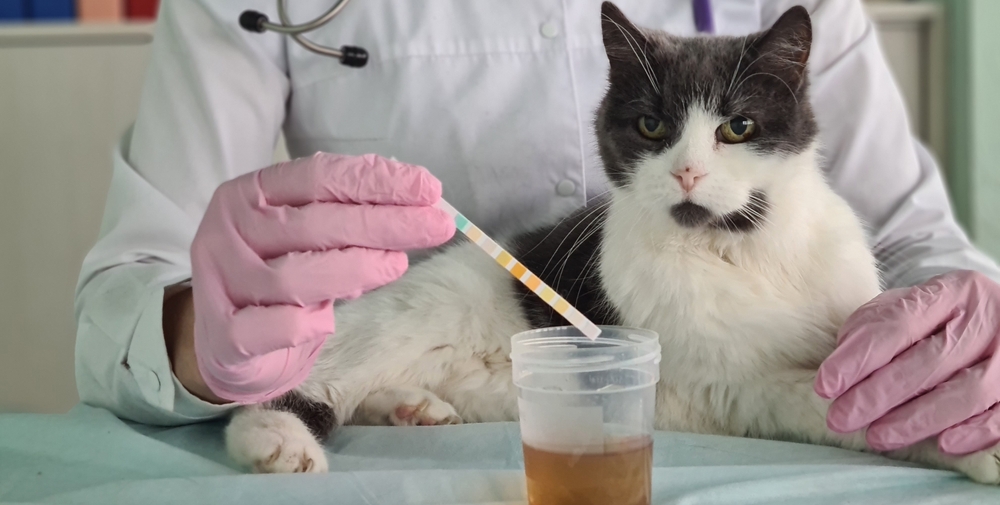
Frequently Asked Questions
How Do I Get a Urine Sample From My Cat?
This is definitely trickier than with a dog, which can be difficult enough! Ask your vet for some non-absorbable litter to place in their litter box, after first thoroughly washing and drying it. Your cat will hopefully use the box as normal, and you can use a pipette to draw up a sample.
Another option is to shred some paper to put in the tray, but this may still soak up the urine, or your cat might not want to use it.
If you simply cannot get a sample, don’t worry, your vet will be able to help.
What Sort of Food Is Best for Preventing FLUTD?
There is a wide range of foods formulated to treat and prevent FLUTD, most of which are also appropriate for cats with no history of urinary tract disease. Most good-quality cat foods will contain the right balance of ingredients to keep your cat’s urine healthy, but keep an eye out for those that list urinary tract health as a priority on their packaging.
Make sure you are using a food that is right for the age of your cat, and be sure to keep an eye on their weight, as obesity can play a major role in FLUTD. Keeping your cat hydrated is a vital part of preventing FLUTD, so make sure they are drinking enough water or that the majority of their diet is made up of wet food.
How Do I Get My Cat to Drink More Water?
If your cat prefers dry kibble or your vet has recommended increasing their water intake, there are a few tips and tricks you can try to get them to take in a bit more aqua.
- Make sure they have multiple water bowls.
- Keep their water bowls out of high-traffic areas and out of the sun.
- Place their water bowls away from their food.
- Try a water fountain, as cats love moving water.
- Try a different material, as plastic can get slimy, warm, or taste strange, so try a stainless-steel or ceramic bowl instead.
- Add some extra water to their wet food.
Water fountains can really help your cat drink more water, but finding the right one can be a challenge. Our Hepper Stainless Steel Cat Water Fountain will keep your cat safe and hydrated with its advanced triple filtration system and large capacity. It's easy to clean in the dishwasher and offers three different flow modes and an automatic shutoff.
Final Thoughts
As you can see, there is a lot more to feline urinary problems than a simple infection, and getting the right diagnosis is the key to success. If your cat is showing signs of trouble in the litter box, try to get a urine sample to take with you to the vet. When it comes to your cat’s urinary tract health, it’s worth going that extra mile of investigation to make sure you get it right.
Featured Image Credit: Yaya Photos, Shutterstock


